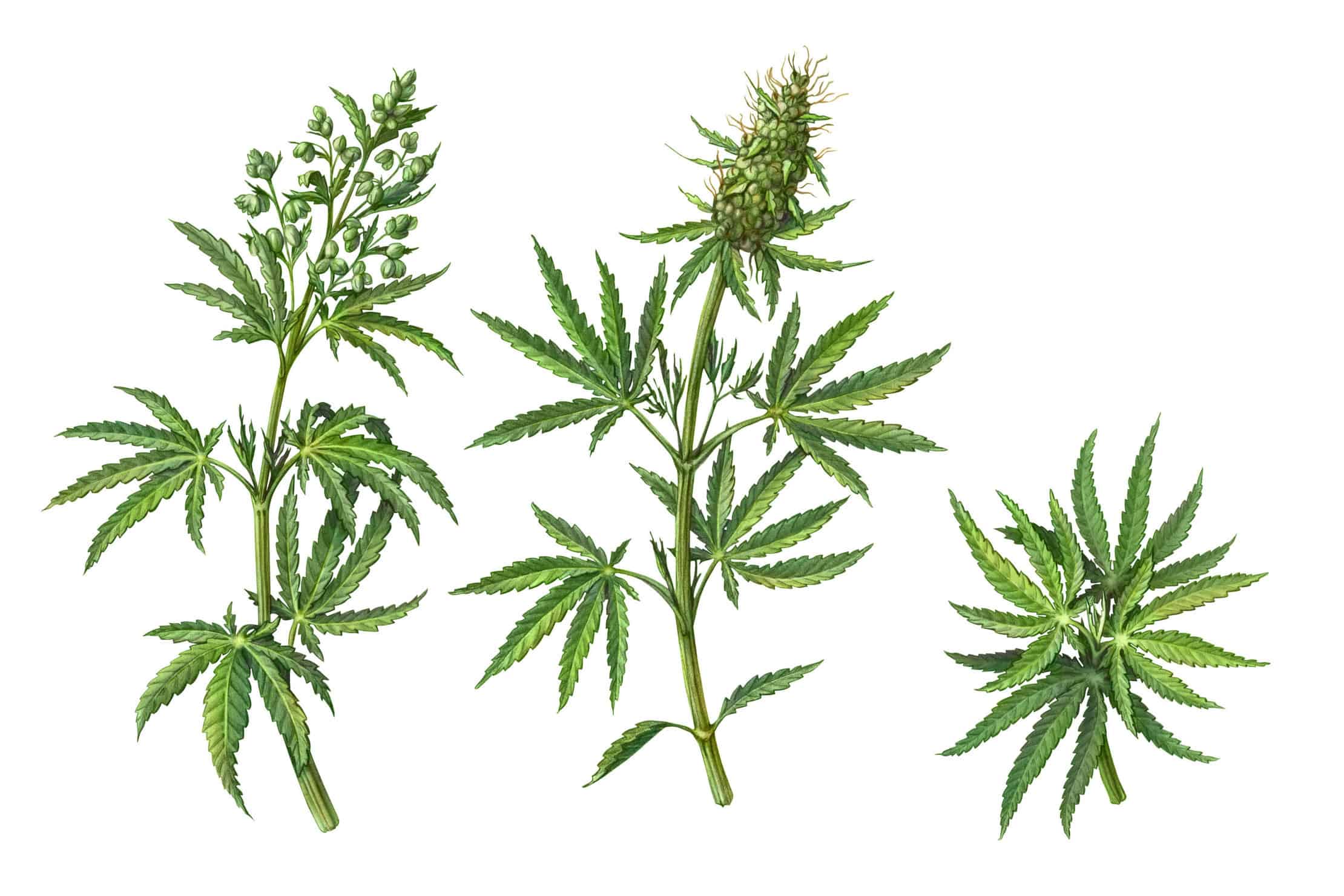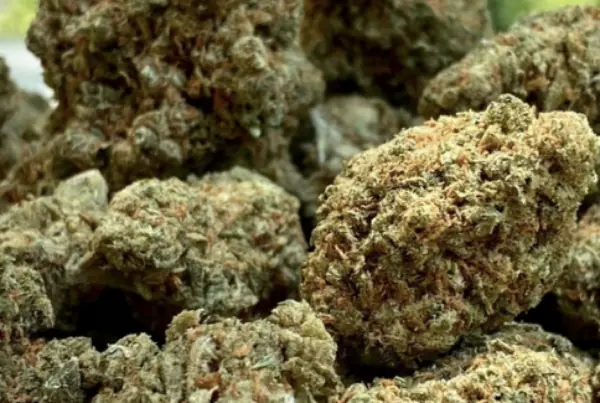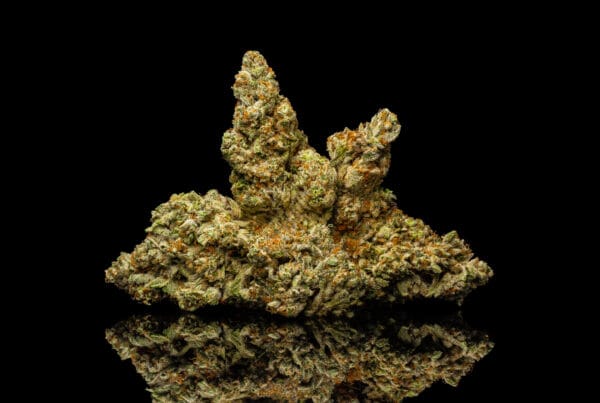TABLE OF CONTENTS
Have you ever purchased the same exact strain from two different stores and you found that they were quite different? Have you ever wondered why? Welcome to the world of phenotypes.
A gram of Purple Haze purchased from different dispensaries is likely to have differences with another gram of Purple Haze purchased from another dispensary.
Join us as we explain what causes these differences and what you should look out for.
What is a Phenotype?

In cannabis cultivation, the phenotype of a plant is important because it determines the potency of the strain, its taste and even how it looks. Phenotypes (or “phenos”) can be described as the same genetic material expressing itself differently. Simply put, phenotype describes plants’ inherent traits more accurately.
Every strain (like basically most living things) has two parents. Obviously, these parents are a male and a female. Naturally, when the female plant is fertilized by the male plant, the resultant seeds will have genetic phenotypes of both parents.
As the cannabis market has grown to include people with varying tastes and preferences, leveraging on these different characteristics is ideal.
A good example of phenotypes is our nuclear families. We might have the same parents but we and our siblings could be quite different.
This is despite the fact that our genetic material will basically be the same. Some might be tall and lanky while others chubby and stout. Others might have a sense of humor while others might be quite shy. That is phenotypes.
A farmer looking for some particular characteristics will purchase seeds from a breeder. Each of these seeds will be a phenotype of the strain. Through the process of culling where he discards the plants that do not have the characteristics he seeks, he will find the “perfect plant” which he can then mass produce.
The characteristics he may be looking for are potency, flavor, bud density, yield, color, smell and many other such characteristics.
This selecting process could take up to a few generations which could be months or even years. What ends up on the shelves for you to purchase is the mass produced pick of the crop.
How To Select Your Own Winning Phenotype
The process of selecting phenos is very meticulous. When carrying out the selection process, organization and tracking throughout the growing process is of utmost importance.
For tracking, growers usually mark and number every single phenotype and list its characteristics.
When labeling, ensure to clearly indicate the original phenos and keep each separate so that you know which to keep and which to discard at the point of flowering.
Below is a process you can follow:
1. When starting out, plant all your seeds, clearly labelling each with a separate tag. For example, if you are growing appx 10 phenos of Purple Haze, you might assign them PH1, PH2, PH3 etc. until you get to PH10. The order of the numbering is not as important as ensuring each pheno is labelled and stays that way with all the updates.
2. Before you consider cloning, ensure each phenotype is about 6-12”. On average, this might take 3-6 weeks.
3. After cloning, number each clone according to the original of its phenotype. For example, PH3 being the clone of PH3 would also be named PH3, and so on.
After the first stage, if you started out having ten seeds, in the end you should have 20 plants which would be 10 seedlings and their 10 clones.
4. Grow your clones separately in a vegetative state.
5. Put the original phenos on a flowering light cycle when they are big enough (after about two months). The flowering light cycle involves 12 hours of light and 12 hours of darkness.
In about 8-10 weeks post flowering, the original phenos should be ready for you to harvest their buds. You should be careful with these as some might be ready before others, as such give each adequate time.
6. At this point, you will look at the quality of the buds and discard those that are not up to par. The ones that are doing well will be kept for future mass production.
An important point to note is that though a lot of the seeds from breeders come pre-feminized, some do not. Because we are looking for buds which only female plants produce, we should determine the sex of the plants first and discard all male. Reproductive organs typically appear a few weeks into the plant's flowering cycle.
7. At the point of harvesting, take meticulous note of the qualities of each phenos bud, i.e its structure, smell, yield, density, flavor and overall appearance. If a pheno is not up to par, discard both it and its clone that is in vegetative state.
Though some phenos will not make the cut for reproduction, they can still be used to make pre-rolls, extracts or even to be smoked but not as premium flowers.
8. Repeat the Process. After you have discarded a number of the phenos and their clones, you can now flower the remaining clones (remember the 12 hours light 12 hours dark schedule?) while at the same time create new cannabis clones to keep at the vegetative state. If you have started out with 10, you probably discarded 6 and now have 4 remaining.
Because the first generation of clones had been growing vegetatively all along, they will be mature enough to be flipped into flowers. Another option is to leave them to continue the process on their own if you want bigger flowers.
9. After you have flowered the clones of the four remaining phenos (for example), harvest them, test their buds and take more notes.
10. Repeat the process of discarding the unfit ones and keeping the winning ones.
11. Continue this process until you’re down to one star phenotype that can even be named after your farm. For example, you could name it “Garden Hill’s Purple Haze Strain”.
Though you do not want to discard a phenotype for minor imperfections, keeping a large number will just mean more rounds. To that end, keep meticulous records and focus only on the best.
In a very general sense, commercial cannabis growers go through at least three rounds to end up with final pheno. Sometimes it even takes longer.
If each round takes 8-10 weeks, 3 rounds would take 24-30 weeks. On top of that, add the extra month needed for germination.
Do you now see why smoking prime weed is not a cheap endeavor? Give or take, this whole process could take anywhere between 7-9 months.
Now you understand the process your favorite phenotype went through before it was ready for you.
What Is Pheno Finding?
This sounds like some fun sporting activity, doesn’t it?
Pheno finding, also known as pheno hunting, is part of the process we have described above. It is the actual process of trying to select the best plant from a batch of similarly descended phenotypes.
When pheno hunting, you will consider characteristics like plant type and bud type. You will consider factors such as growth speed, resistance and yield.
As previously discussed, the desired traits are usually not expressed in a cannabis plant until it starts flowering. If for example you are hoping to breed shorter plants, after flowering you will be able to tell which of the phenotypes you have most closely met this criteria, and you will thus discard the rest. When you discard phenotypes that don’t meet your criteria, remember to discard their clones too.
The plants that usually get discarded are those that are not impressive physically and don’t have appealing properties like aroma.
Is Growth Rate A Component of Cannabis Phenotype?
Though many other desired traits can only be seen at the point of flowering, growth rate is apparent right from the get-go.
Many professional cannabis breeders and seed banks often go through batches of even a thousand phenotypes looking for that perfect one.
“
There are over 300,000 jobs in the cannabis industry. CTU trained me for one of them!

Makes $24.50 @ THC +
Though a very intense and laborious process, it is necessary in ensuring that only the best genetics gets reproduced.
To Use Or Not To Use Feminized Seeds?
The importance of selecting the best phenotype cannot be stressed enough. If breeders and growers don’t take their time in finding the strongest and best of the breed, there would be a lapse in both potency and productivity.
A key note to remember is that using cannabis feminized seeds is much easier, but it will give you less variety. Regular seeds which then the grower will have to select for females usually have stronger characteristics from their parental lineage.
The reason for this is that in the breeding of regular cannabis seeds, both a male and a female are used. In some cases of feminized seeds, only one “hermaphrodite parent” is used.
Conclusion
Over the past thousands of years or so, the evolution of the cannabis plant has brought about a wide range of colors, aromas, flowering times, growth patterns and cannabinoid profiles.
The different varieties within these strains are what are referred to as phenotypes.
By experimenting with a wide range of particular strains, a grower can find the perfect phenotype which will have all the properties he desires.

Gavin Kushman
Gavin is a worldly adventurer and cannabis connoisseur, embarking on journeys that take him to the far corners of the globe to explore and document the varied effects, flavors, and histories of both renowned and lesser-known strains. From the misty high-altitude farms of the Hindu Kush highlands to the vibrant cannabis cafes of Amsterdam, Gavin's quest for knowledge spans continents. A recognized authority in the cannabis industry, he frequently lends his expertise to leading publications such as Cannabis Training University, where his captivating blog articles chronicle his unique experiences with different cannabis strains.











 Jeff was involved in an accident where he endured a traumatic brain injury. He had a week-long stay in ICU where brain surgeons
Jeff was involved in an accident where he endured a traumatic brain injury. He had a week-long stay in ICU where brain surgeons  100% risk free money back guarantee within 48 hours after purchase if student has not completed any of the courses or exams.
100% risk free money back guarantee within 48 hours after purchase if student has not completed any of the courses or exams.